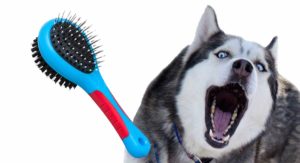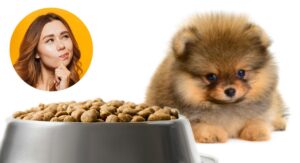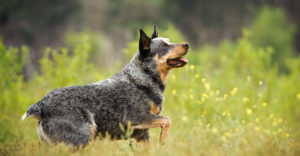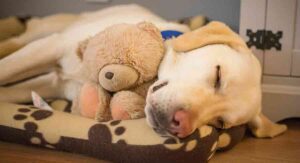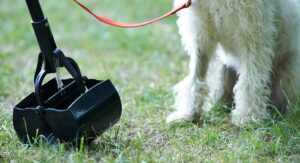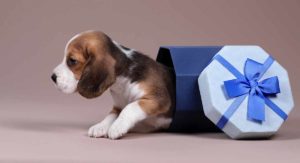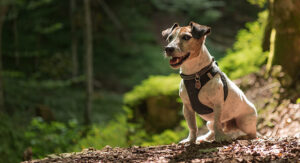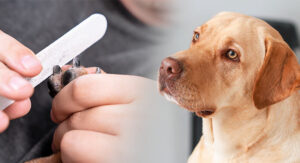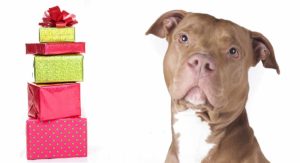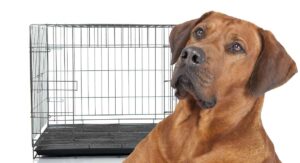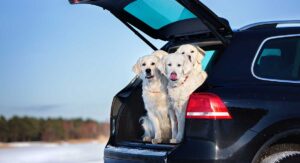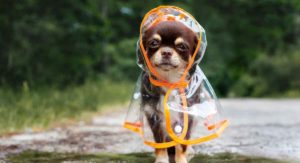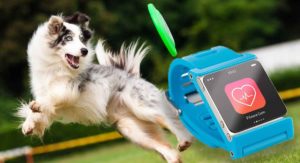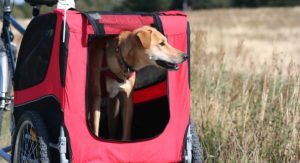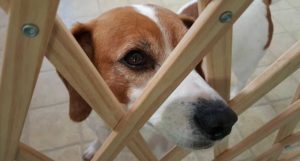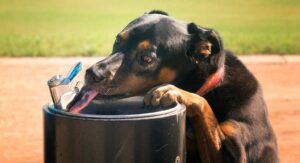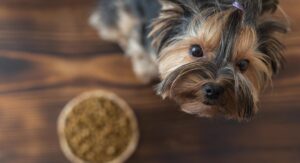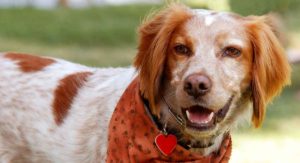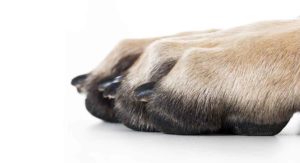The best brush for Huskies is able to detangle soft fur, without damaging the hairs or their skin underneath. I recommend an undercoat rake, slicker brush, wide toothed comb and Furminator. Avoid harsh de shedding tools though, as they can clip the coat and cause an uneven surface. Contents Great […] Read More
The Best Food For Pomeranian Puppy Health and Happiness
The best food for Pomeranian puppy health is one that gives them everything they need nutritionally, in portions that are easy to chew. These little puff balls need a slightly more specialized diet than some breeds. Because of their small size and poor dental health, aim for a high-quality, high-protein […] Read More
Best Toys for Blue Heeler Dogs
The best toys for Blue Heelers help to keep their bodies and their brains busy. An extremely intelligent and active breed, it’s important to make use of every tool at your disposal to keep them happy. And toys can really help to do just that. Contents When it comes to […] Read More
Calming Dog Toys
If your dog has difficulty settling down, then we’re here to help you with our selection of the best calming dog toys. A variety of calming dog toys are avialable. Different styles are designed to work in different ways, to alleviate or manage agitated or over-excited behavior. Choosing the best […] Read More
Best Pooper Scooper
The best pooper scooper can help people with bad backs, be easy to use, or be portable for long walks. It isn’t always a case of choosing the best manufacturing quality or value for money. The best pooper scooper for you will depend on the problem it needs to overcome. […] Read More
Puppy Toys: The Best Dog Toys For Puppies
The best puppy toys keep their bodies and brains busy. And are tough enough to last. Puppies love toys. But every breed is different, and what can be the best toy for one puppy might not suit another as well. Depending upon the nature of your pup’s background he might […] Read More
Puppy Products
Having the right puppy products makes life with a new dog so much simpler. Which really matters when a furry little whirlwind arrives, and temporarily turns your life upside down! Click on the images below to jump to our main guides on these popular puppy products: Puppy Food Grooming Products The pictures […] Read More
What Is The Best Harness For A Small Dog? Reviewing The Options
What is the best harness for a small dog? One that is comfortable, safe, and secure for their small bodies! It can be hard to find good harnesses for very small breeds. But, it’s important that you choose one that fits your dog well. Choose something too small, and your […] Read More
Best Dog Nail File – Professional Files and Clippers For Every Breed
The best dog nail file is easy to use, as comfortable as possible for your dog, and makes light work of keeping their nails tidy. Dog owners can choose from board files of different materials, and even electric nail grinders to get the job done. Choosing the best dog nail […] Read More
Pitbull Gifts: Find the Perfect One
The best Pitbull gifts celebrate the gorgeous looks and devoted nature of this wonderful breed. Although Pitbulls have endured their share of controversy, they are full of love and loyalty. And their reputation is slowly being rehabilitated by a new generation of responsible breeders and owners. These caring people want […] Read More
Best Heavy Duty Dog Crate – Which Ones Will Last A Lifetime?
Finding the best heavy duty dog crate can solve a multitude of dog owning headaches. Whether a pooch is a determined digger, a power chewer, or just completely oblivious to his own size and power. A heavy duty dog crate will stand the test of time better than a straightforward […] Read More
Best Dog Ramp For SUV And Large Vehicle Owners
The best dog ramp for SUV cars will help your dog easily get in and out of your car. Ramps can be a great option for dogs with delicate joints. The best ramps are safe, lightweight, and fold away easily when they aren’t in use. Dog ramps for SUV cars […] Read More
Best Raincoats For Dogs – Keep Your Furry Friend Dry In Style
The best raincoats for dogs are comfy, sturdy, and impervious to wet weather. Optional extras included in the best of the best raincoats for dogs are technical fabrics, reversible linings, and reflective or illuminated panels for visibility in poor weather conditions. That’s why our top five favorite raincoats for dogs […] Read More
Best Dog Activity Monitors—Helping to Navigate Your Pets’ Daily Activity
The best dog activity monitors are brimful of clever tech and extra features, which can make choosing between them tricky. We think these are the top five best dog activity monitors on the market at the moment: PitPat 2 – find out why FitBark 2 – find out why Petble […] Read More
Best Dog Bike Trailers – Take Your Pooch For A Ride
The best dog bike trailers keep your dog safe and comfortable while you cycle together. Many people use dog bike trailers if their dogs suffer from mobility problems. Sick, injured, and disabled dogs can really benefit from a trip in a dog bike trailer! Others use them for senior dogs. […] Read More
Best Dog Gates for Your Pet and Your Home
The best dog gates will keep your dog from accessing areas you don’t want him to. Dog gates can be used to keep your dog out of muddy parts of your back yard, or away from non-dog-friendly areas in your home. Plus, puppies can be initially timid in new places, […] Read More
Best Dog Water Fountain – Top Dog Water Fountains Reviewed
A dog water fountain can be a great way to keep your dog cool and hydrated on hot days. But dog water fountains vary just as much as dogs do. Some require refilling more often, but some refill themselves automatically. Others can provide cooled or warm water. You will also […] Read More
Best Dog Food For Yorkies – Tips And Reviews From Puppies To Seniors
The Yorkshire Terrier is a toy-sized dog with a spritely personality. They do best on a high nutrient density diet with plenty of protein. The breed tends to be healthy and long-lived, and no doubt the best dog food for Yorkies will help them to make the most of these […] Read More
13 Awesome Pet ID Tags You and Your Pup Will Love
Whether you’re getting ready for a new puppy or sprucing up your dog’s collar, pet ID tags are an important way to keep your pet safe. Personalized pet ID tags make sure that your dog can be identified if they ever get lost, and you can be easily contacted. Having […] Read More
Best Dog Nail Grinder – The Best Claw Care For Your Dog
If you have a dog, you’ll need to know how to choose the best dog nail grinder. Trimming your dog’s nails can be a stressful experience for both parties! You can do the job by using a dog nail grinder, making the task easier and avoiding stress. In this article, […] Read More
